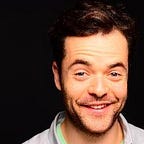How do we resist the urge to create THE network?
And how can we learn to instead uplift the whole ecosystem around us?
When we started Sandbox in 2007, I had big ambitions for it. I wanted it to be the leading community for change-makers under 30. At the time, there wasn’t a well curated global group for this audience and we saw an opportunity. But as we grew, naturally more and similar groups started to emerge, like Global Shapers, Kairos, Forbes under 30, One Young World and many others. And I remember feeling a sense of competition with these groups. I was worried that we had to compete for members’ attention and resources. Among all these groups I wanted us to be the leading one. The most active one. The one with the most number of local hubs. The one with the kindest and most accomplished people. The one that everyone looked up to.
An unhealthy default pattern
Over the years I have come to see my sense of competition as misguided. And I have come to realize that I was embodying an unhealthy pattern that I see in other communities as well: the desire to be THE network.
It is subtle, but often present. We are starting a community for people who love carrots. Do we want to be THE community for carrot lovers? Do we aspire to be the BEST, the LEADING community, the one that DOMINATES the field?
This sense of competition seems like a natural default and consistent with our overall context of capitalism. But a market-driven approach is short-sighted especially when we are trying to transform the world around us. If we truly care about carrots, isn’t the world better off if all carrot loving groups are doing well? And aren’t we all aligned with groups that share the same purpose?
To weave a different future, we have to uplift everyone
My sense is to weave thriving communities and healthy ecosystems, and to transform our systems towards a more beautiful future, we have to look beyond the borders of our own groups. And instead of trying to create the strongest tribe that rules them all, intentional community weaving is about uplifting everyone around us as well.
I really enjoyed Rich Bartlett’s rather trippy writing on “Seeing Like a Superorganism” and my sense is that this is connected to our inquiry here. Can we stop seeing our groups as isolated islands and rather as fractals of something bigger?
How?
Here are some ideas on how to role-model a different, pro-social behavior.(and I’d LOVE to hear your ideas and experiences in the comments!)
- It starts with mapping the ecosystem. What other groups and projects are out there with a similar intention?
- How can we bring attention to similar groups? Can we list “other communities you might be interested in” on our website? Can we regularly highlight one of them on our social media channels? And can we be extra diligent about giving them credit when we build on their work?
- Can we build a personal relationship with the people weaving other groups with similar intentions?
- Can we cross-weave our members, allowing them to connect across?
- Can we share resources with them? What if we set aside a part of our budget, say 10%, to uplift the wider ecosystem?
What do you all think of this? And what have you learned about role-modeling this different behavior? Thanks so much for sharing!
—
Interested in getting regular community building insights in your inbox?
Every few weeks we send out a short email with 3–5 of our favorite insights, blog posts and articles about building meaningful communities. If you care about bringing people together, this might be for you. Sign up here.
